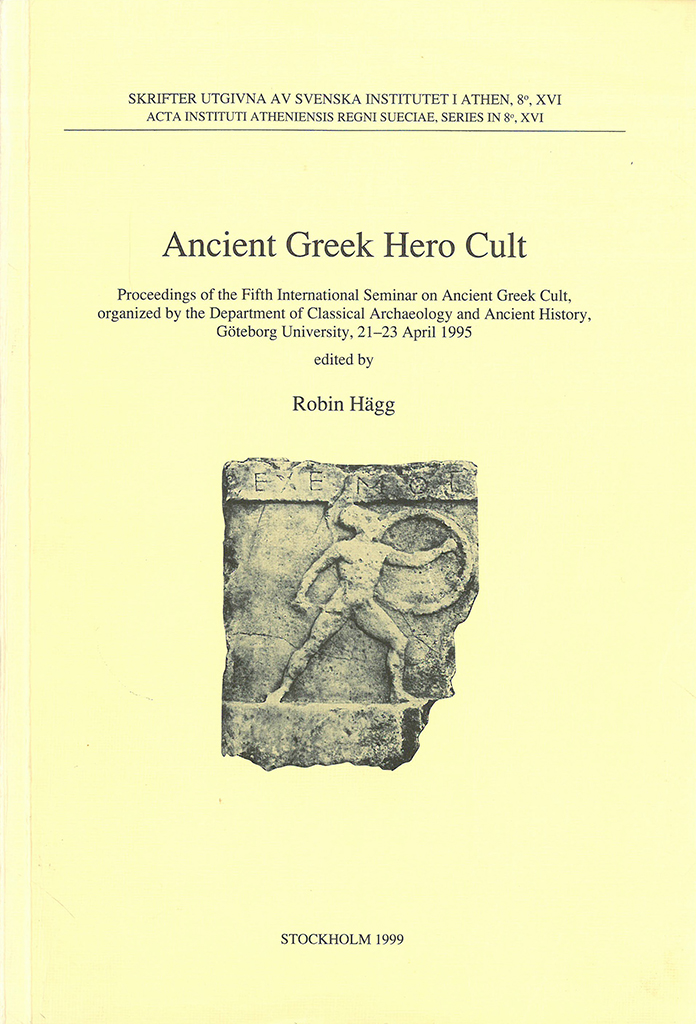Opuscula is published by the Swedish Institutes at Athens and Rome, with the aid of a grant from the Swedish Research Council. Distributed by Eddy.se AB. View journal at ERIH PLUS. All content available with open access. Home, refuse, and reuse during the Early Helladic III to the Middle Helladic I transitional period. A social zooarchaeological study of the Asine bothroi By Stella Macheridis Abstract The practice of digging, using, and filling large pits, cut into the ground and sometimes lined with clay, was extensive from the Early Helladic III to the Middle Helladic Period I (c. 2,200–1,900 BC) in large parts of the Aegean area. This particular type of feature is called bothros and has been reported since the early 20th century from many settlements, mainly from the Greek mainland. Although the bothroi are numerous in the archaeological record, few studies of them have been made. During the excavations at Asine, a prehistoric coastal settlement in the Argolid, a number of bothroi were identified. This paper is a contribution to the study of bothroi, and in particular of the faunal remains found within these features. I propose that the bothros was an important part of the domestic organization at…
Opuscula is published by the Swedish Institutes at Athens and Rome, with the aid of a grant from the Swedish Research Council. Distributed by Eddy.se AB. View journal at ERIH PLUS. All content available with open access. A note on domestic vs communal grain storage in the Early Helladic period By Monica Nilsson Abstract This paper sets out to propose an alternative model of economic management at settlements of Early Helladic I–II date, where evidence of socioeconomic hierarchies is not prominent in the archaeological material. It is suggested here that the remains of certain original structures within the boundaries of settlements were once granaries which served the whole community. If this reading of the material is accepted, then communal storage seems to have supplemented domestic storage or constituted the sole method of grain keeping at a number of settlements during the initial stages of the EH period. The practice was then abandoned and, with one exception, after the EH II–III break there is instead a strong case for domestic storage only. A potential EH I–II communal management of basic food supplies thus carries wider implications for the interpretation of the general management of settlements. Bibliographical information Monica Nilsson, ‘A note…
Published by the Swedish Institute at Athens. Distributed by Astrom Editions. Ancient Greek hero cult. Proceedings of the Fifth International Seminar on Ancient Greek Cult, organized by the Department of Classical Archaeology and Ancient History, Göteborg University, 21–23 April 1995 Edited by Robin Hägg Abstract A collection of twelve papers, read at an international seminar in Göteborg, that deal with various phenomena of the ancient Greek hero cult, based on literary, iconographical and archaeological evidence. Among the special topics discussed are the hero cults in Early Iron Age Greece, the relationship between funerary ritual, the veneration of ancestors and the cult of heros, the Danaides of Argos as “ancestors”, the multilocality of heroes, patriotic heroes, the politics of the transferal of the bones of heros, the position of the Dioskouroi as Laconian heroes worshipped also in Attica, the origins of Greek hero cult in the context of overseas foundations, the heroon of Asclepius in Athens, the sacrificial rituals of Greek hero cults in Pausanias, the hero Melikertes-Palaimon at Isthmia, and the development of hero cults in the Hellenistic and Roman periods. Contents Preface (p. 7) Alexander Mazarakis Ainian, ‘Reflections on hero cults in Early Iron Age Greece’, pp. 9–36 Robin…



